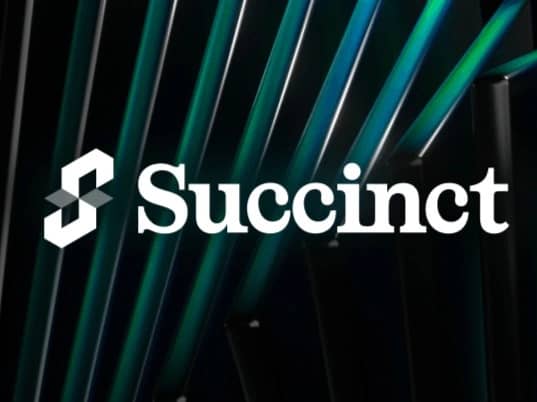위키 구독하기
Share wiki
Bookmark
Succinct
Succinct
Succinct Network는 분산된 증명자 집합을 조정하여 증명 경쟁이라는 새로운 인센티브 메커니즘을 통해 영지식 증명을 생성하는 분산형 프로토콜이며, 영지식 기술을 위한 효율적이고 강력한 증명 클러스터를 만듭니다.
개요
Succinct Network는 전 세계적으로 암호화된 컴퓨팅을 접근 가능하고 효율적으로 만들도록 설계된 영지식 증명 인프라의 중요한 발전을 나타냅니다. 이 네트워크는 사용자가 입력과 수수료가 있는 RISC-V 프로그램 형태로 증명 요청을 제출할 수 있는 통합 플랫폼 역할을 하며, 증명자는 최소한의 대기 시간과 비용으로 이러한 증명을 생성하기 위해 경쟁합니다. 이러한 조정은 증명 생성 권한에 대한 전액 입찰 경매인 증명 경쟁을 통해 이루어지며, 애플리케이션별 블록체인에서 결제됩니다.
이 네트워크는 RISC-V 바이트코드의 실행을 증명하는 영지식 가상 머신(zkVM)인 SP1과 함께 설계되었습니다. 이러한 긴밀한 통합을 통해 증명 기술의 발전이 사용자에게 신속하게 도움이 될 수 있습니다. Succinct Network는 영지식 증명에 대한 수요와 공급을 집계하여 점점 더 효율적인 증명 인프라 개발을 위한 전 세계적인 경쟁을 유도하는 선순환을 만들면서 분산된 증명자 생태계를 유지합니다 [1].
기술
SP1 zkVM
Succinct Network의 핵심에는 임의의 결정적 프로그램의 증명을 가능하게 하는 고성능 zkVM인 SP1이 있습니다. SP1을 사용하면 개발자가 Rust로 프로그램을 작성하고 Ethereum, 다른 L2, Solana, 모바일 장치 및 웹 브라우저를 포함한 다양한 플랫폼에서 검증할 수 있는 영지식 증명을 생성할 수 있습니다 [2].
SP1의 주요 기능은 다음과 같습니다.
- Rust에서의 범용 프로그래밍 지원
- 고성능 증명 기능
- 플랫폼 간 검증
- 증명 복사 방지를 위한 임베디드 증명자 주소
- 작업 재사용 방지를 위한 고유한 난수 생성
SP1은 지속적인 개선을 거듭해 왔으며, 최근 SP1 Turbo (v4.0.0)는 다양한 ZK 작업에 대한 비용과 대기 시간을 크게 개선했습니다 [3].
증명 경쟁
증명 경쟁은 Succinct Network를 구동하는 새로운 인센티브 메커니즘입니다. 이는 증명 요청자가 제공하는 수수료를 받기 위해 증명자가 경쟁하는 전액 입찰 경매 역할을 합니다. 이 메커니즘은 다음을 위해 설계되었습니다.
- 증명자 간 경쟁 가능하게 함: 증명자는 요청을 이행할 권리를 입찰하여 증명에 대한 가격 신호와 시장 청산 가격을 만듭니다.
- 효율성과 분산화의 균형: 최저 비용 증명자가 경매의 100%를 차지하는 단순한 역경매와 달리, 증명 경쟁은 전액 입찰 기능을 통해 분산된 증명자 집합을 유도합니다.
- 시빌 공격 방지: 이 메커니즘은 전액 입찰 기능과 담보 요구 사항을 통해 증명자가 경매에 입찰할 때 자신의 신원을 분할하는 것을 막습니다.
- 처리량 극대화: 입찰을 통해 증명 요청을 단일 증명자에게 할당함으로써, 증명 경쟁은 여러 증명자가 동시에 동일한 요청에 대해 작업할 수 있는 채굴 기반 접근 방식에서 발견되는 경합을 방지합니다 [1].
네트워크 아키텍처
Succinct Network는 사용자와 증명자를 낮은 대기 시간과 높은 처리량으로 조정하도록 설계된 애플리케이션별 블록체인을 통해 구현됩니다. 이 아키텍처는 다음을 제공합니다.
- 검열 저항: 다운스트림 애플리케이션이 요청에 대한 검열 저항 보장을 받을 수 있도록 합니다.
- 활동성: 높은 가용성으로 증명 요청 및 이행을 안정적으로 조정합니다.
- 성능: 짧은 블록 시간으로 증명 이행의 과도한 대기 시간을 최소화합니다.
블록체인은 요청, 입찰 및 증명 이행에 대한 합의에 도달하는 네트워크를 운영하는 노드를 통해 요청에 대한 강력한 검열 저항 및 활동성 보장을 제공할 수 있는 점진적인 분산화를 위해 설계되었습니다 [1].
증명 풀
Succinct Network의 핵심 혁신은 증명 풀의 개념입니다. 증명 풀을 통해 충분한 정교함이나 담보가 없는 개별 증명자도 공동으로 요청 슬롯을 입찰할 수 있습니다. Bitcoin의 채굴 풀과 마찬가지로 증명 풀은 다음을 가능하게 합니다.
- 허가 없는 참여: 가정용 증명자는 경매 입찰 방법을 배울 필요 없이 참여할 수 있습니다.
- 경쟁적인 증명: 풀은 운영을 최적화하고 저렴한 전력 지역에서 용량을 찾음으로써 하드웨어 팀과 경쟁력을 유지할 수 있습니다.
- 증명 위임: 증명자는 더 공격적으로 또는 덜 공격적으로 입찰하는 풀에 참여하여 위험 선호도를 표현할 수 있습니다.
증명 풀은 전문 하드웨어와 규모의 경제의 잠재적인 중앙 집중화 효과에 대한 대응책으로, 분산된 네트워크를 유지하는 데 도움이 됩니다 [1].
사용 사례
Succinct Network는 영지식 증명의 이점을 얻는 광범위한 애플리케이션을 가능하게 합니다.
잘못된 내용이 있나요?
